Following the Snowy Owls
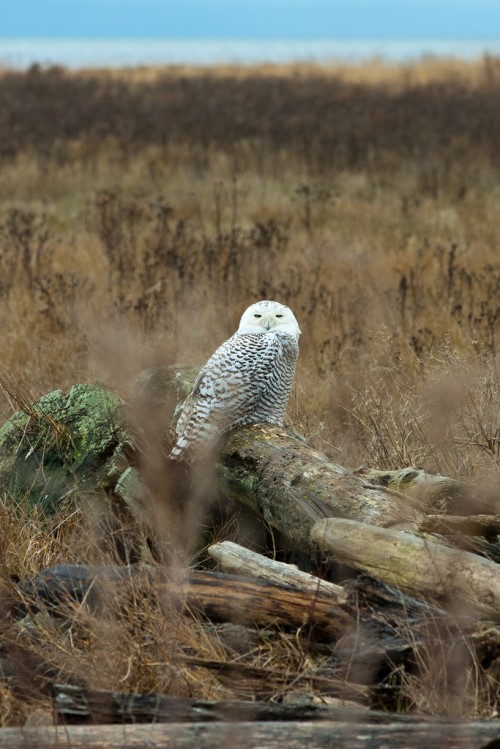
Since first moving to the Environmental Learning Center last August, many people have told me, “You must go see the snowy owls!” This advice has been on my radar since migratory birds began returning to their winter feeding grounds in the Skagit Valley. Who are these snowy owls that everybody speaks of? After doing some research, I learned that not only were these birds magnificent and beautiful creatures, but that this was an unusual year for the North American Snowy Owl. This year is known as an “irruption” year. An irruption is caused by a shortage in the Artic lemming population in the Arctic Tundra of Canada. As a result, snowy owls, whose primary food source are lemmings, must travel in search of additional food and can be found as far south as the United States. This event occurs every four to seven years as predator-prey dynamics change, and in those years snowy owls can be found in hospitable places like Boundary Bay Park in southern British Columbia and occasionally along the Skagit Flats in Washington. The owls are expected to return north sometime this month.
In anticipation of their departure, I knew a trip over the border to Boundary Bay had to be made. The snowy owls were also spotted just north of Bellingham at Sandy Point, but the word on the birder streets was that it was possible to see 20 to 30 of them at once in British Columbia. So we chose to cross over, and the adventure was well worth it.
Here are some pictures from our wondrous day with the snowy owls.
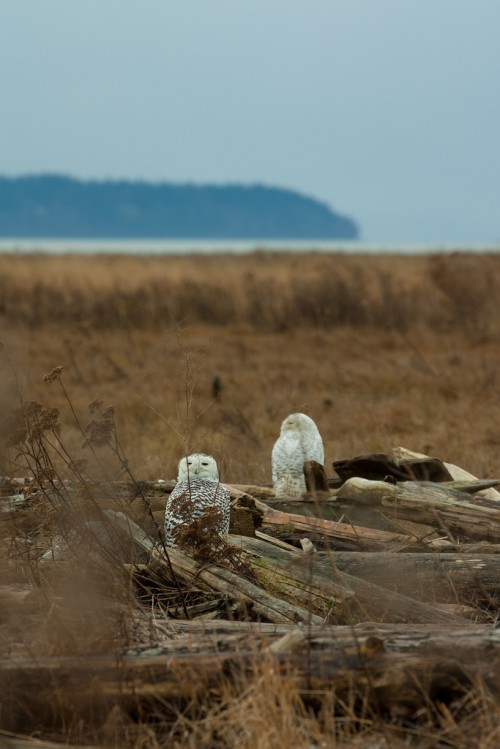 Just off of 72nd Street in Delta, BC, we were lucky enough to witness about 25 snowy owls hanging out along the dyke path in Boundary Bay Park.
Just off of 72nd Street in Delta, BC, we were lucky enough to witness about 25 snowy owls hanging out along the dyke path in Boundary Bay Park.
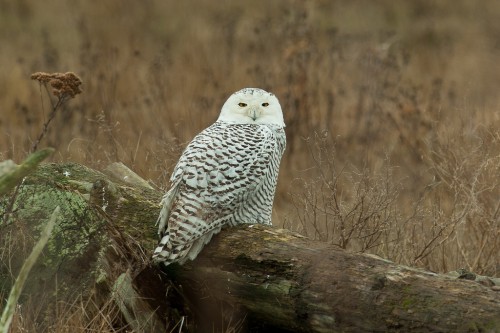 These large owls breed in the Artic Tundra, and as you can tell by their unmistakable white plumage they probably blend in very well up there. Females and juveniles are more heavily marked than males. Adult males can be almost pure white.
These large owls breed in the Artic Tundra, and as you can tell by their unmistakable white plumage they probably blend in very well up there. Females and juveniles are more heavily marked than males. Adult males can be almost pure white.
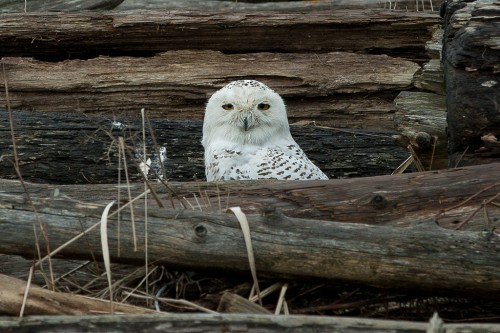 An adult snowy owl may eat more than 1,600 lemmings a year, or three to five every day. The owls supplement their diet with rabbits, rodents, birds, and fish when lemmings cannot be found. The flat land and water resources of Boundary Bay Park offer adequate habitat for the snowy owls to overwinter and hunt during low lemming population years.
An adult snowy owl may eat more than 1,600 lemmings a year, or three to five every day. The owls supplement their diet with rabbits, rodents, birds, and fish when lemmings cannot be found. The flat land and water resources of Boundary Bay Park offer adequate habitat for the snowy owls to overwinter and hunt during low lemming population years.
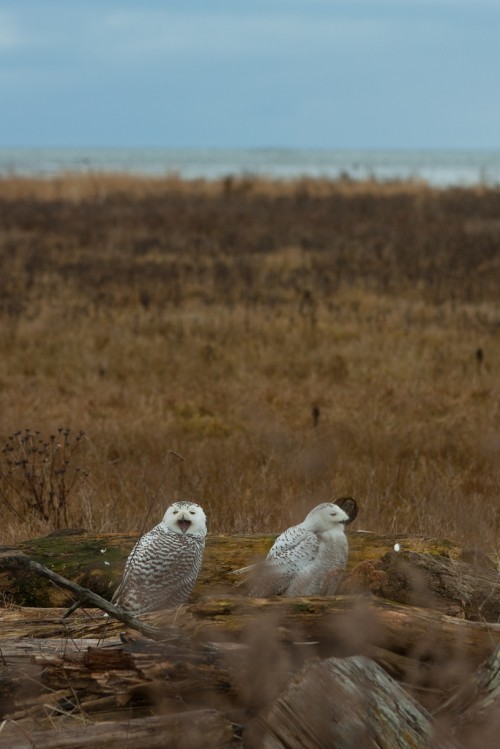 The big smile captured in this picture looked like a yawn towards the observers on the path at first glance. As it turns out, this snowy owl was probably caught panting for thermoregulation.
The big smile captured in this picture looked like a yawn towards the observers on the path at first glance. As it turns out, this snowy owl was probably caught panting for thermoregulation.
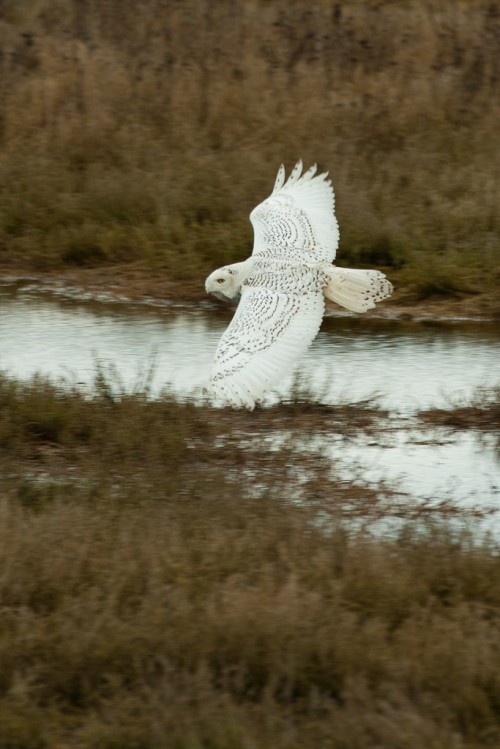 After at least two hours of birding, we saw our first snowy owl take flight. Snowy owls are known to be patient hunters; they can perch for hours and wait to identify their prey before soaring off in pursuit.
After at least two hours of birding, we saw our first snowy owl take flight. Snowy owls are known to be patient hunters; they can perch for hours and wait to identify their prey before soaring off in pursuit.
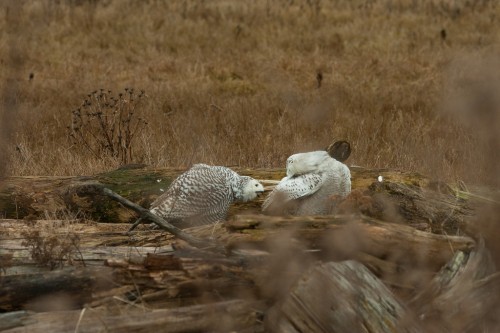 My favorite moment was watching two owls start to prune each other. They would take turns caring for each other, picking and fluffing away. To witness these natural behaviors in the wild is priceless.
My favorite moment was watching two owls start to prune each other. They would take turns caring for each other, picking and fluffing away. To witness these natural behaviors in the wild is priceless.
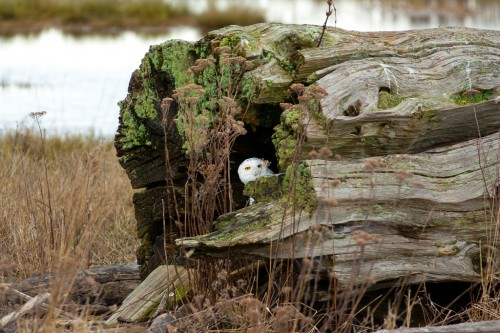 This owl was pretty cute too, spying on us through a downed log.
This owl was pretty cute too, spying on us through a downed log.
All photos courtesy the author.


Great piece on the snowies! The pictures are wonderful, some of the best I’ve seen this great owl year! Good work!
excellent stuff definitely appreciated this post, i’m going to read a little more on the website soon after i am finished with work!
definitely appreciated this post, i’m going to read a little more on the website soon after i am finished with work! 
I spotted a white owl here in Bellingham Washington. December 24 2022.
I live on the edge of protected wetland. Blew my mind.